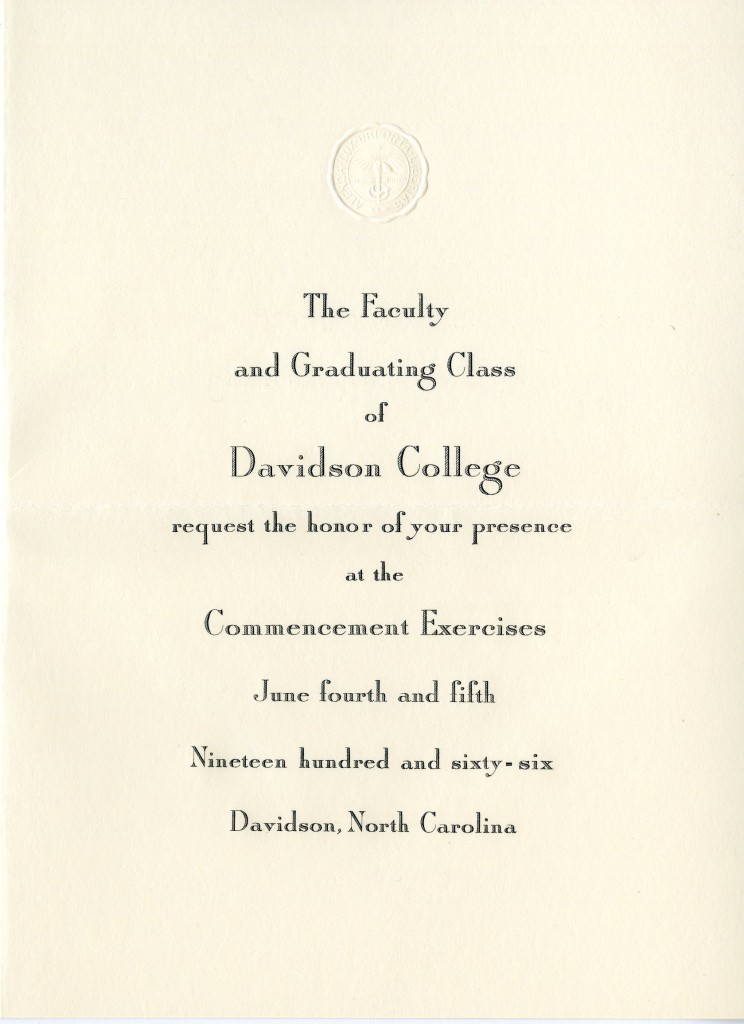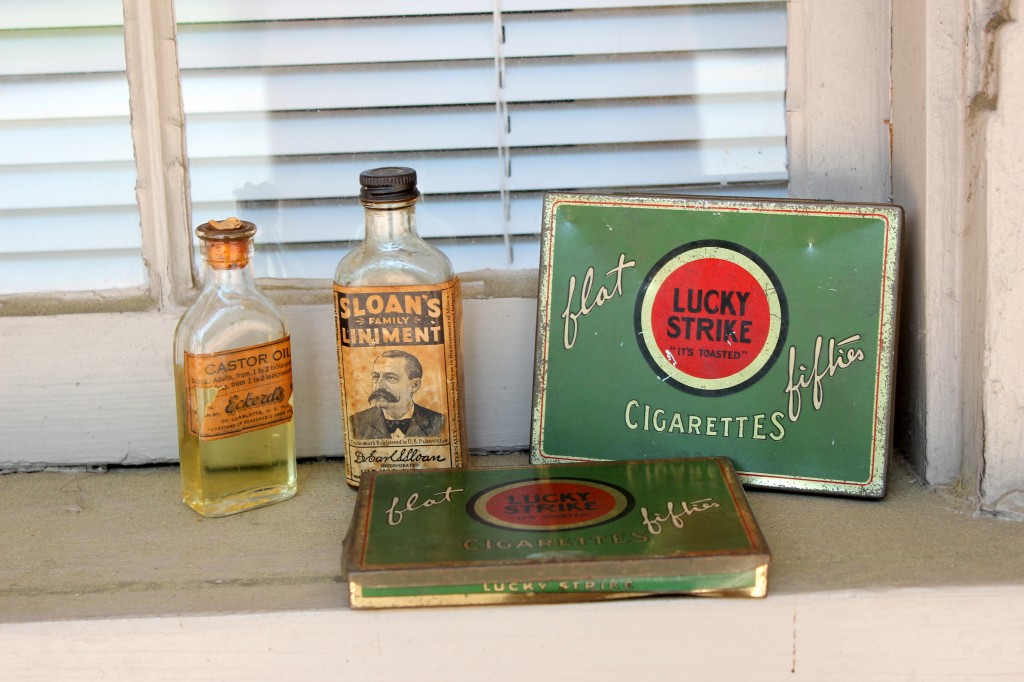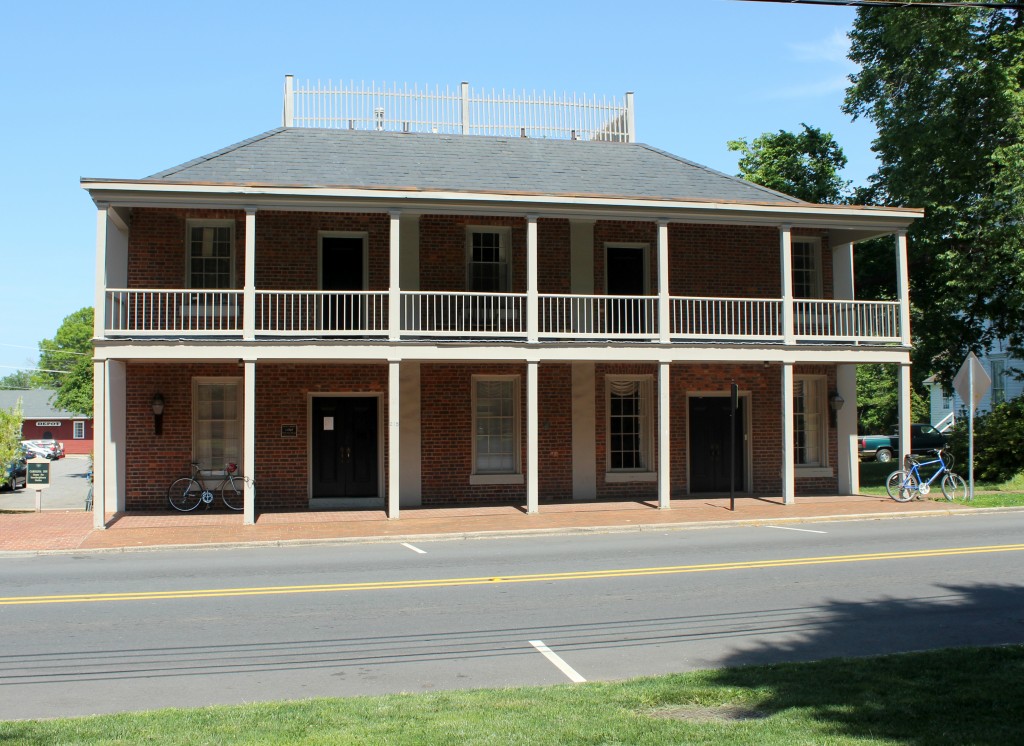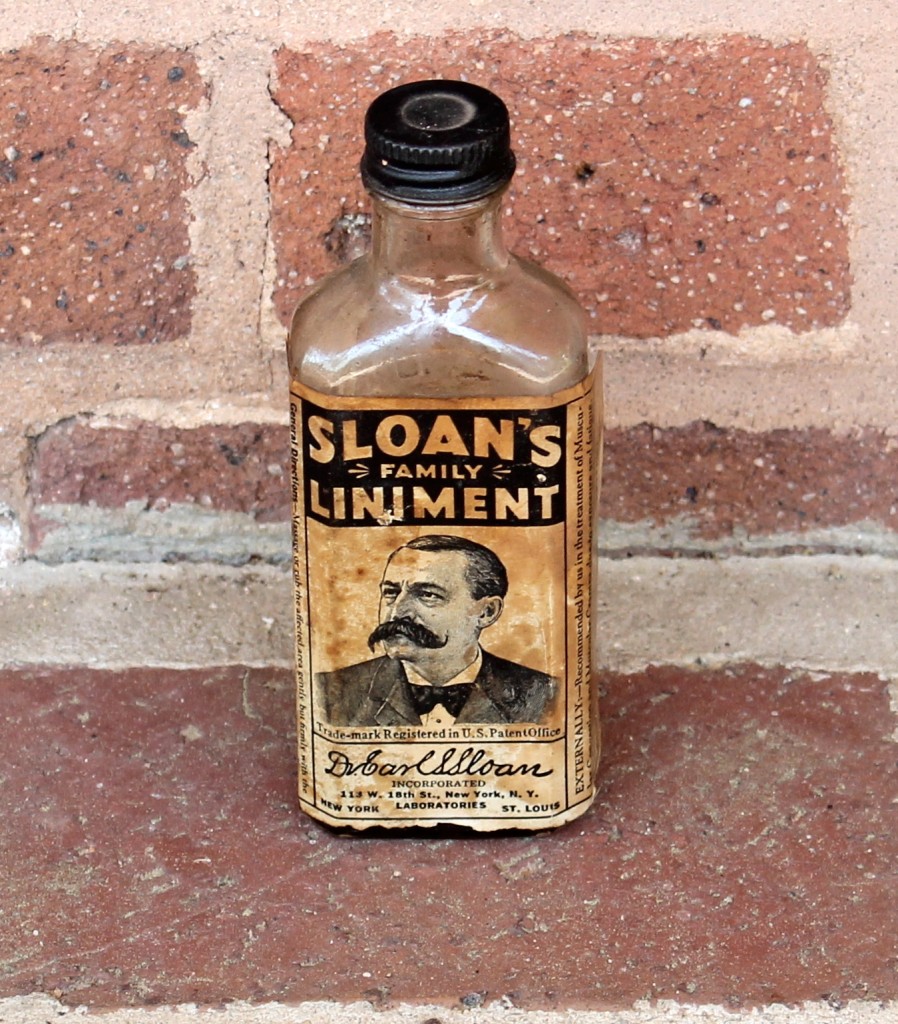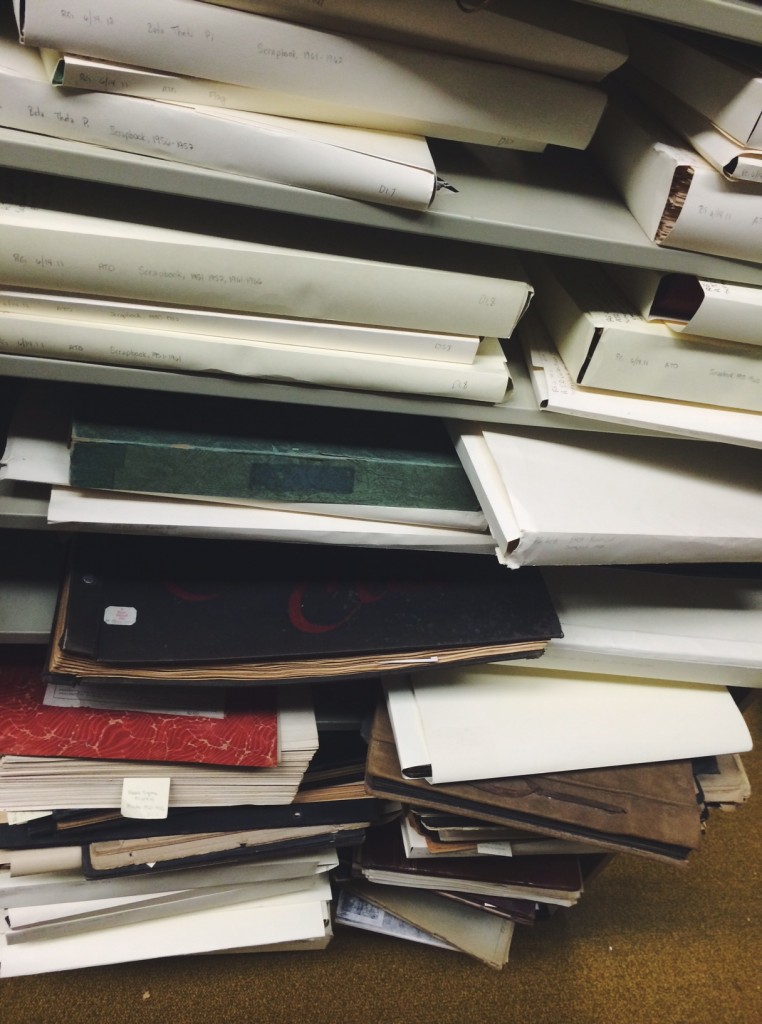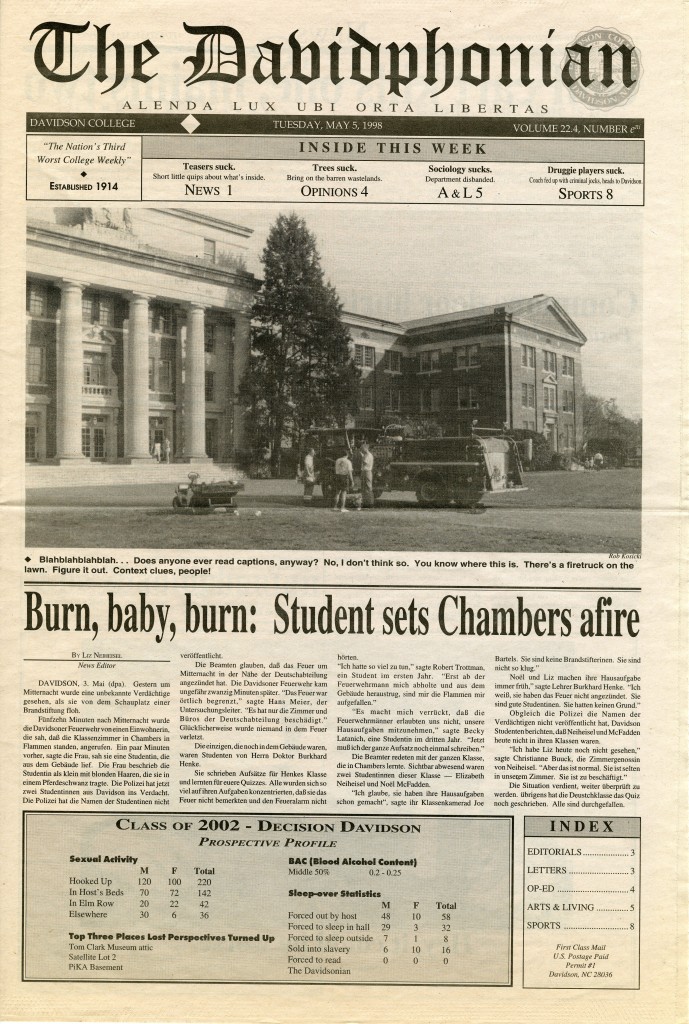Early last month, Davidson made news for the College’s decision to transition to self-service laundry. Prior to the opening of the College Laundry in 1920, students patronized African-American laundresses in the area, or paid fees to those fellow students who facilitated laundry deliveries to Charlotte. One early student who had his laundry done locally was future United States President Woodrow Wilson, as he records in a notebook used during the 1873 – 1874 academic year:

As early as 1911, the College’s Board of Trustees wanted to establish a College Laundry, in order to promote “the comfort, convenience, and health of the student body and Faculty and their families.” However, financial considerations made the project impossible until the 1920-1921 academic year.

The 1919-1920 College Catalogue announced the opening of the new facility: “A laundry sufficient to do all unstarched work for the students has been authorized and will be in operation at the opening of next fall. For hygienic and other reasons all students will be required to patronize this laundry. The charge will be as low as will allow for the proper conduct and care of the plant.”

By the early 1960s, the College Laundry became overwhelmed by the demands of the growing student body – as enrollment rose to 1,000 students, costs and the need for new equipment rose similarly. In a December 21, 1966 letter from President Grier Martin wrote that: “we plan to meet with a cross section of the student leaders to get their feeling on laundry operations in the future. In the past, we have felt that we had alternatives to either continue the present ‘bundle’ system or go to a per piece basis for students, removing the now compulsory feature.”

This issue came up again when the College went coeducational in 1972, when the addition of female students further stressed the Laundry’s capabilities. The Special Sub-committee on Coeducation of the Student Life Committee recommended that, since “the general consensus [is] that the laundry as it stands now is not equipped to launder women’s apparel satisfactorily… no woman student shall be required to patronize the college laundry, with the possible exception of mandatory linen service [and] coin-operated washing and drying facilities be installed…” By 1980, the self-service machine charges were incorporated into the laundry fee, rather than remaining coin-operated.

Throughout the latter half of the twentieth century, Davidson student opinion was divided – while many valued the convenience and time saved in having their laundry done by the College, a vocal group resented paying the mandatory fees and preferred a self-service, pay-as-you-use system. Petitions and letters to the editor of the Davidsonian reflected these sentiments.

In defense of the Laundry, information pamphlets given to new students in the 1980s featured an explanation of why the College ran a laundry service: “Because we are a small college in a small town, we operate a laundry to provide a convenient, economical, time-saving service to students.”
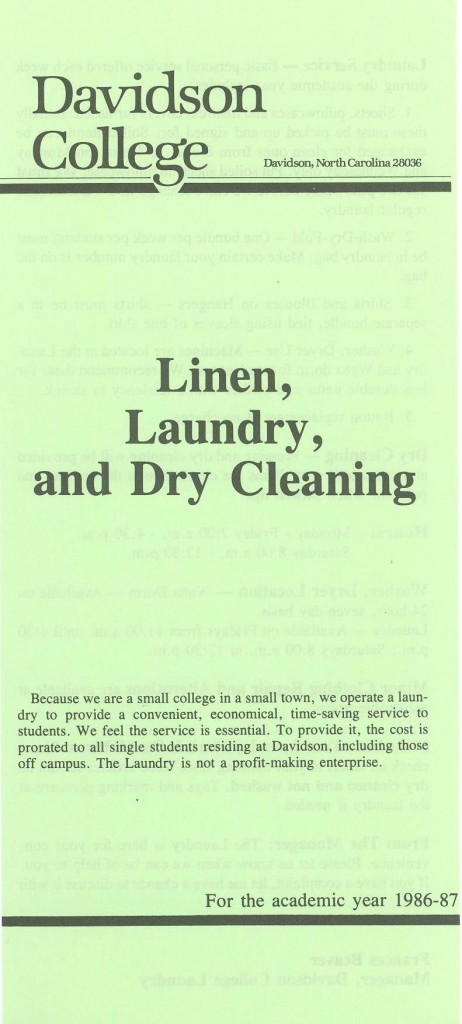
In 2004, the College Laundry building was renamed the Lula Bell Houston Laundry, in honor of the retirement of laundry worker Lula Bell Houston after 57 years of service to the College. By 2011, the College Laundry saw another change – a move to recyclable canvas bags, rather than the brown paper the clean clothes had traditionally been wrapped with.
With the transition to an entirely self-service model beginning on May 15, 2015, the Lula Bell Houston Laundry building will be vacated. Current students, alumni, and community members: what do you think the Laundry building should house next?



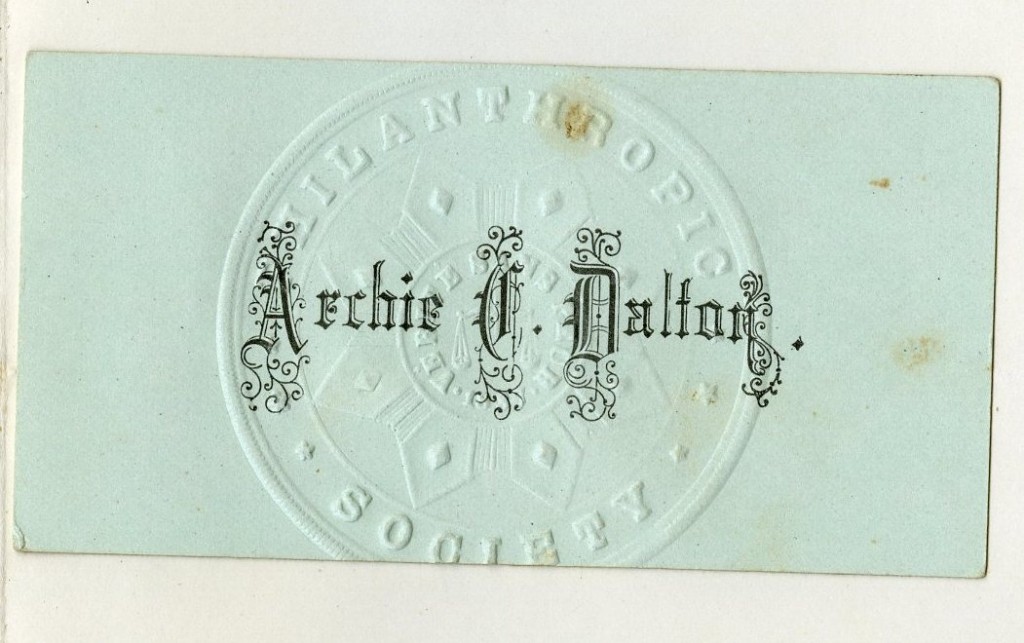
![The 1888 commencement Order of Exercises includes a number of interesting-sounding speeches - one imagines that the average Davidson student has certainly "Learn[ed] to Labor and to Wait" by graduation!](http://libraries.davidson.edu/aroundthed/wp-content/uploads/sites/5/2014/05/commencement1880001-1024x825.jpg)









